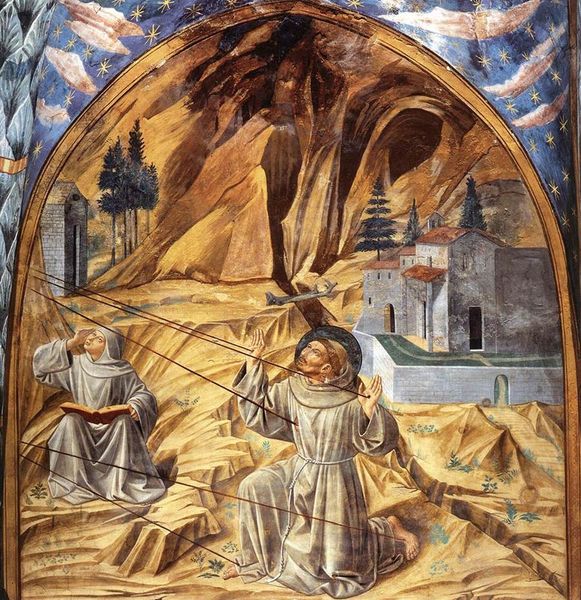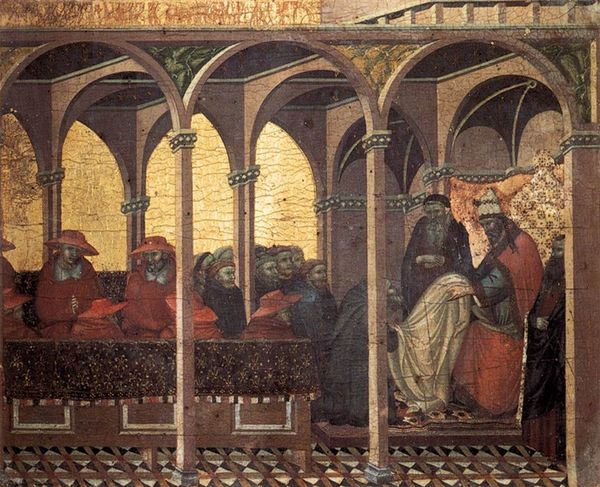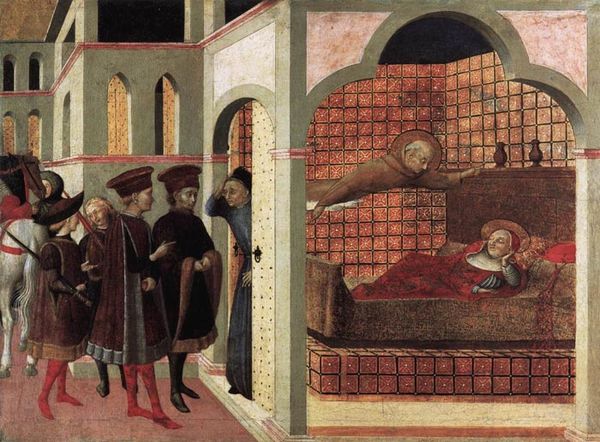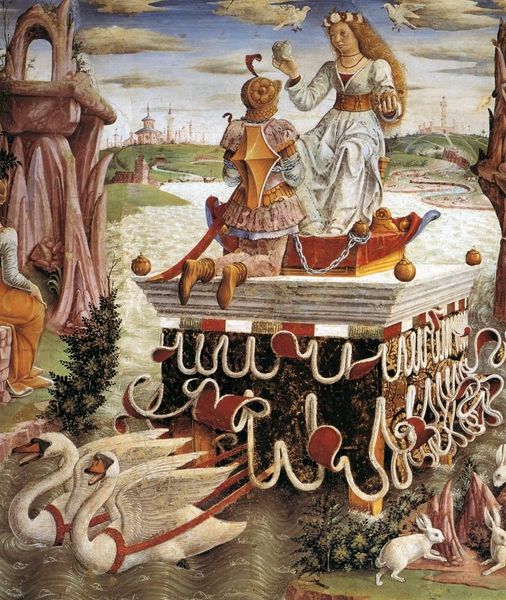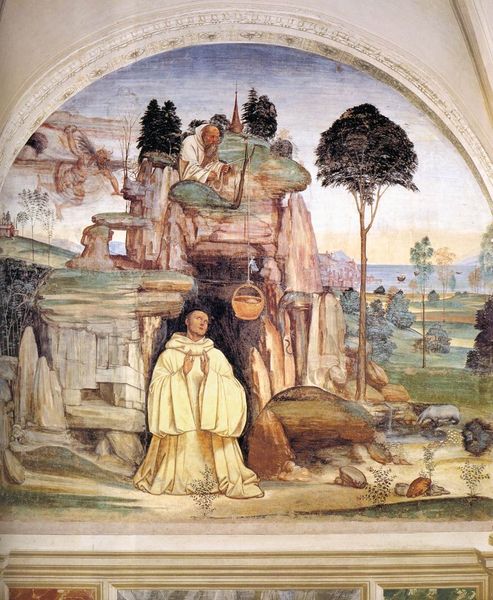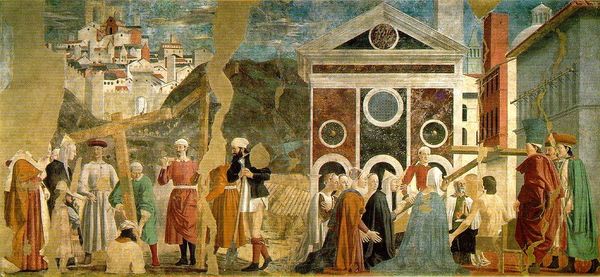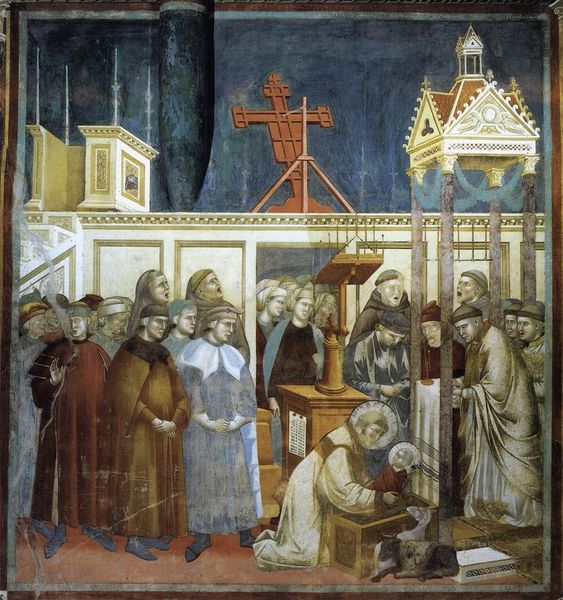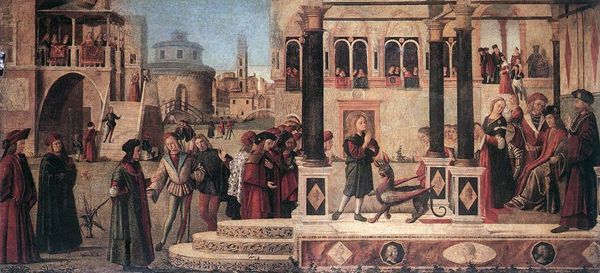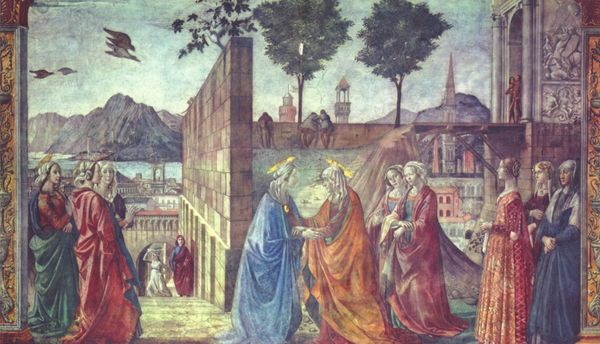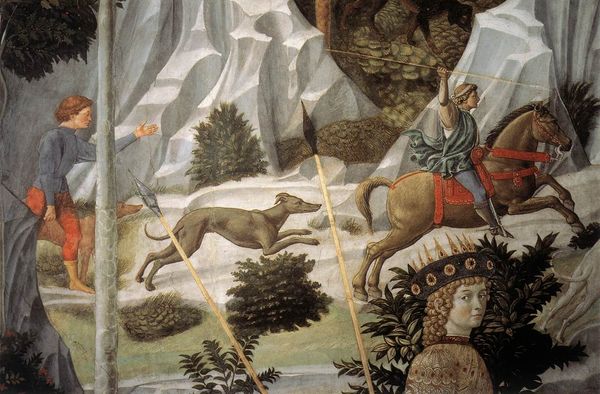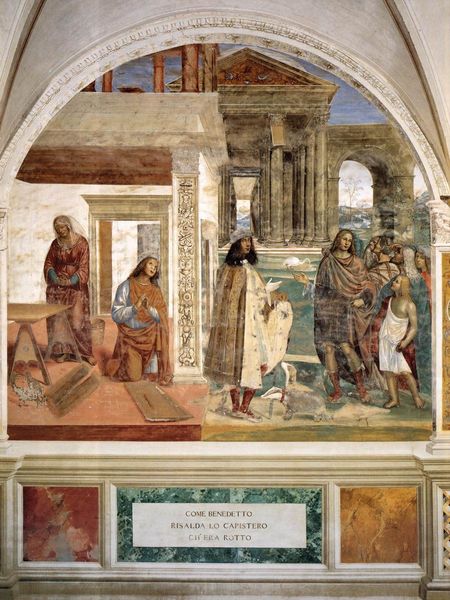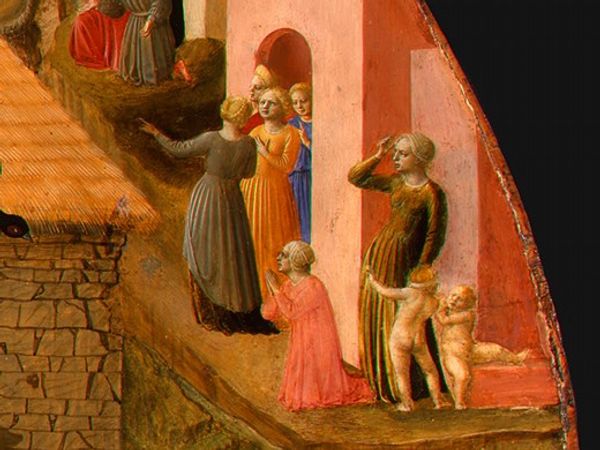
tempera, painting
#
tempera
#
painting
#
landscape
#
sienese-school
#
figuration
#
oil painting
#
history-painting
#
italian-renaissance
Copyright: Public domain
Editor: This is "Predella Panel: Hermits at the Fountain of Elijah," painted by Pietro Lorenzetti in 1329 using tempera. There's something so still and peaceful about the hermits in this landscape. How do you read this piece? Curator: Let's consider what tempera meant for Lorenzetti and his workshop. It wasn't just a medium; it dictated the pace, the layering, and ultimately, the texture. Tempera dries quickly, encouraging precise application, demanding planning and labor division. These elements—the speed, precision, planning—shaped not only the final product but the collaborative environment within the workshop. What impact might the choice of tempera have on the distribution of labor? Editor: So, instead of thinking about the individual genius of Lorenzetti, we look at how the materials and the work environment shaped the image? That makes a lot of sense. Curator: Exactly. Consider the gold leaf that would have been used in areas of the painting (though little appears visible here now). Applying gold leaf was often a specialist task. What did this process of specialized labour, of creating and consuming costly items like gold, mean for the patronage networks supporting the art? What sort of societal hierarchy did it rely on? Editor: The figures seem really humble, almost like regular folk in robes! It's a very human take. Curator: Interesting point. Are they really ‘humble,’ or is this how they are presented within this piece, crafted with costly materials within a tightly managed labour system, so that wealthy patrons who consume and display the work feel more sympathetic or see them more easily? Editor: I hadn't thought of it that way before! The choice of materials and techniques completely changes my reading of the scene. Curator: And perhaps it shows the inherent contradictions of visualizing simplicity. It makes me wonder if that's true even now. Editor: Me too. This has opened my eyes to seeing art through a new lens – considering the process of making alongside the image itself.
Comments
No comments
Be the first to comment and join the conversation on the ultimate creative platform.
